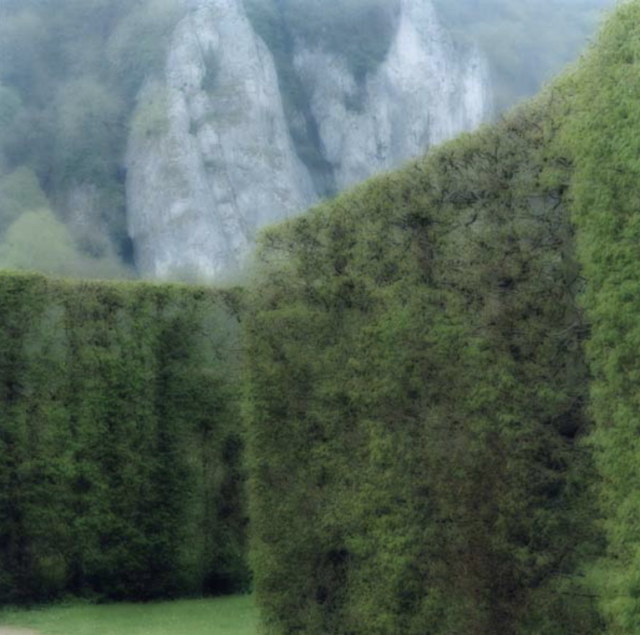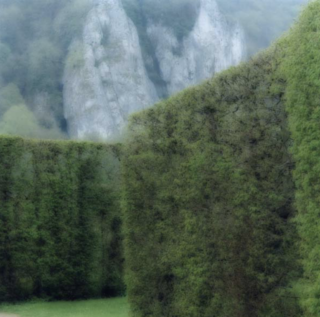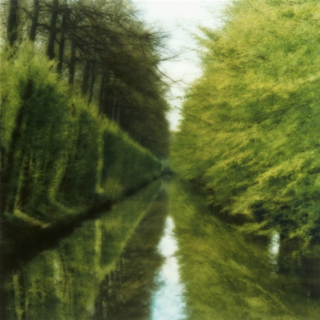“Like the gardens which she photographs, Geesaman’s pictures are a telling metaphor for our lives as social creatures: a compound of nature and artifice in which pleasure itself becomes an instrument of control.” Chris Waddington, Art in America, October 1990
Two works (Château Freyr and Belœil, Belgium, both 2004) by prolific American photographer Lynn Geesaman have recently been hung on the second floor of the VAC, adding to the impressive array of publicly displayed pieces around Davidson’s campus. They are on loan from John Andrew MacMahon ’95. These chromogenic prints pose a unique challenge to the medium of photography itself, as they stray from typical modern photographic principles. Geesaman’s work looks nearly painterly and drawn, as opposed to captured by a camera.
Before we get into her distinctive principles and artistic practices, it is interesting to note Geesaman’s varied background. She was born in Cleveland in 1938 and received her education at Wellesley. Though she received a degree in physics, she developed a hobby taking photos at Wellesley. Following college, she worked at a California science lab for 20 years until she decided to uproot and move to the midwest. After her move to her current home of Minnesota, she began taking photos of her travels throughout Western Europe, particularly England, France, Belgium, Italy, and Germany.
Geesaman’s photography is consistent both in subject matter and in artistic style, which makes her work recognizable among the canon of contemporary photographers. She is particularly attracted to images of public parks and gardens. In this subject matter, she examines closely the relationship between the earth and humanity, one where nature is closely controlled, curated, and adorned by humans. This type of human intervention in the environment has lasting consequences, which come through in her manipulation of both the process and the photographs themselves. She leaves ambiguity between what is inherently natural and real and what has been created. She plays with color, symmetry, and levels of haze in order to create an otherworldly and dreamlike atmosphere in an otherwise ordinary landscape. In a sense, her photography makes the most realistic, recognizable, and solid aspects of nature inherently abstract.
Both pieces are dominated by strong geometric forms of the garden landscape, and yet there is a contrast with the soft, hazy, and atmospheric quality inherent to her work. There is a delicate balance between light and shadow, with many areas of the photographs appearing to glow from the inside out. Specifically with these two works, her use of color is intentionally limited to blue and green, as this restriction allows for more attention to be paid to the textures, forms, and contrasts she includes in the frame. Overall, Geesaman does the near-impossible by applying the principles of the abstract and painterly to modern photography. She is the recipient of multiple prestigious grants, such as the Bush Foundation Artist Fellowship and the National Endowment for the Arts Regional Visual Arts Fellowship in the Midwest. If you would like to see more of her work in person, American collections such as the Whitney Museum of Contemporary Art in New York, the Philadelphia Museum of Art, the Art Institute of Chicago, the Museum of Fine Arts in Houston, and the Museum of Contemporary Photography hold pieces by Geesaman. She is also exhibited at the Biblioteque Nationale de Paris. She also has published several books, inlcuding Poetics of Place: Photographs by Lynn Geesaman, Gardenscapes, and Hazy Lights & Shadows within the span of 1998 and 2007.



